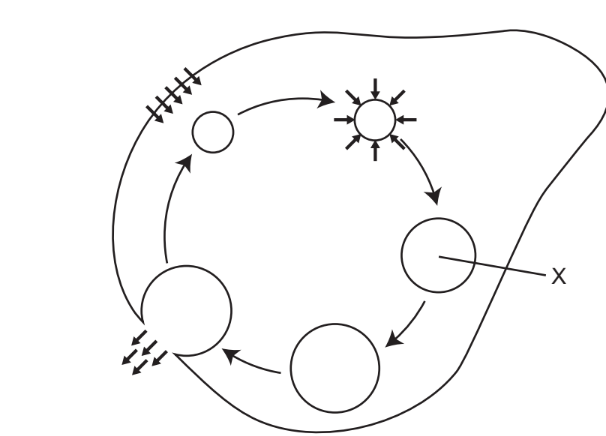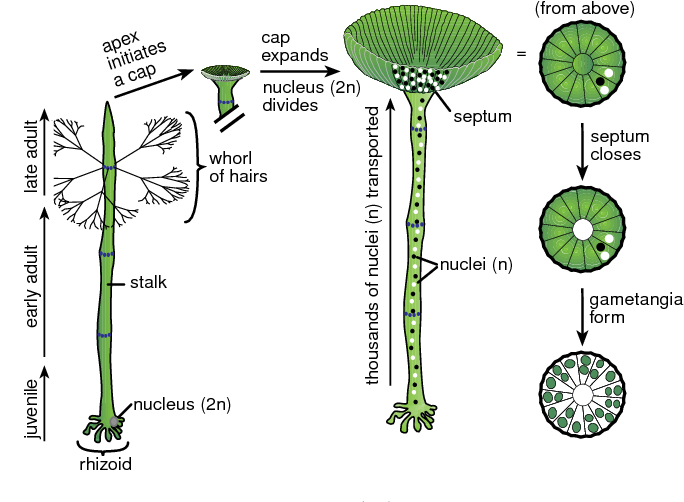Question
The diagram refers to questions 2 and 3 . It shows a heterotrophic, unicellular, freshwater organism that has been placed in distilled water. The short arrows show movement of water and the long arrows show a sequence of steps.

What life function is illustrated?
A. Nutrition
B. Homeostasis
C. Endocytosis
D. Response
▶️Answer/Explanation
Ans:B
Homeostasis is illustrated in the diagram. Homeostasis refers to the maintenance of a stable internal environment in response to changes in the external environment. In this case, the unicellular organism is responding to the hypotonic environment of distilled water, which has a lower solute concentration than the cytoplasm of the organism. As a result, water moves into the cell by osmosis, causing the cell to swell and potentially burst. The organism responds by actively pumping out excess water through contractile vacuoles, as shown by the long arrows in the diagram. This process helps the organism maintain its internal water balance and avoid damage to its cellular structures.
Question
The giant alga Acetabularia has a feature that suggests it is an exception to the cell theory. What feature is this?
A. It lacks a nucleus.
B. It lacks a cell wall.
C. It has only one mitochondrion.
D. It lacks subdivision into separate cells.
▶️Answer/Explanation
Markscheme
D

Giant algae Acetabularia are the exception to cell theory because they contradicts the concept of of cell theory that a cell is the smallest unit of life, but the giant algae Acetabularia may grow up to length of 5cm and most amazing are a single cell structure, means are not subdivided into separate microscopic cells. However, they looks alike multicellular organism but are unicellular organism.
What provides evidence for the endosymbiotic theory?
A. Mitochondrial DNA in eukaryotic cells
B. 70S ribosomes in prokaryotic cells
C. Gene transfer from prokaryotic cells to eukaryotic cells using plasmids
D. Prokaryotic cells (Escherichia coli) in the large intestine digest proteins
▶️Answer/Explanation
Markscheme: A

Endosymbiosis is simply a organism living within another organism with a symbiotic relationship. Mitochondria provides energy at a cellular level and reproduce within your cells. Their numbers map to cell health, athletic ability and aging. Strenuous exercise promotes their numbers. Mitochondrial DNA has limited yet very important role in transcribing crucial proteins involved in oxidative phosphorylation reactions. Mitochondrial DNA contains 37 genes, all of which are essential for normal mitochondrial function. 13 of these genes provide instructions for making enzymes involved in oxidative phosphorylation. The remaining 24 genes are involved in the creation of transfer RNA (tRNA) and ribosomal RNA (rRNA) which help to turn amino acids into proteins. The important thing about their DNA is that mitochondria are only passed from the mother to children. Thus, geneticists can use mitochondrial DNA to trace the maternal linkage.